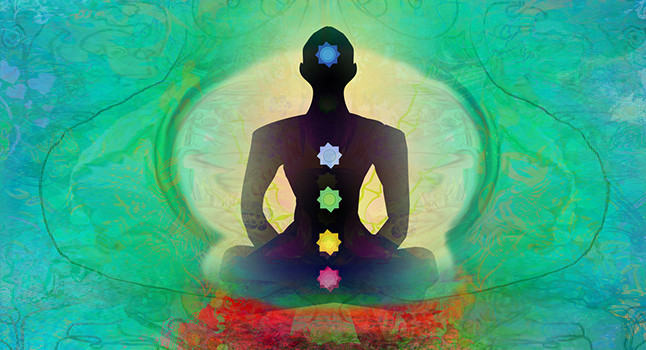Exploring Kundalini Meditation: Techniques for Spiritual Awakening

Are you seeking a deeper connection with your spiritual self? Look no further than the practice of Kundalini meditation.
In this article, we will guide you through various techniques that can awaken your Kundalini energy, leading to a profound spiritual awakening.
Discover the history of Kundalini meditation, learn how to understand and activate the powerful Kundalini energy, and explore the chakra system and breathwork techniques that can enhance your practice.
Get ready to embark on a transformative journey towards spiritual enlightenment.
Key Takeaways
- Kundalini meditation has a rich history dating back thousands of years and is rooted in ancient texts of yoga and tantra.
- Mental and physical readiness, along with creating a sacred space, are important for preparing for Kundalini meditation.
- Grounding techniques, breathwork, and visualization are key techniques for activating the Kundalini energy.
- Balancing the chakras and harnessing the power of breathwork are essential in Kundalini meditation for spiritual awakening.
The History of Kundalini Meditation
Kundalini meditation has a rich history that dates back thousands of years. Its origins can be traced to ancient India, where it was first practiced as a spiritual discipline by yogis and sages.
The history of Kundalini meditation is deeply rooted in the ancient texts of yoga and tantra. These texts describe the awakening of the dormant energy within the body, known as Kundalini, and the various techniques used to facilitate this awakening.
Over the centuries, Kundalini meditation has evolved and been passed down through generations, with different lineages and traditions adding their own unique practices and insights.
Today, Kundalini meditation is widely practiced around the world, offering individuals a powerful tool for spiritual growth and awakening.
Understanding the Kundalini Energy
Understanding the kundalini energy can be a transformative experience in your spiritual journey. As you delve into this ancient practice, you will embark on an awakening process that leads to profound spiritual transformation.
Here are four elements that will help you grasp the power and significance of kundalini energy:
- Serpent-like energy: Visualize the kundalini energy coiled at the base of your spine, resembling a dormant serpent waiting to be awakened.
- Ascending force: Imagine this energy slowly rising through the chakras, each one representing a different aspect of your being, cleansing and activating them along the way.
- Unleashing power: Feel the surge of energy as the kundalini reaches the crown chakra, flooding your entire being with divine energy, unlocking your full potential.
- Union of opposites: Witness the harmonious merging of masculine and feminine energies within you, creating a balanced and integrated state of being.
Embrace the journey of understanding kundalini energy, and let it guide you towards a profound spiritual transformation.
Preparing for Kundalini Meditation
Before delving into the powerful practice of Kundalini meditation, it’s important to ensure that you’re mentally and physically ready.
Taking the time to prepare yourself mentally by clearing your mind of distractions and focusing on your intention can greatly enhance your meditation experience.
Additionally, creating a sacred space can help you cultivate a sense of tranquility and facilitate a deeper connection with your inner self. Whether it’s a designated corner of your room or an entire room dedicated to your practice, having a space that is solely for meditation can make a significant difference.
Mental and Physical Readiness
To prepare yourself mentally and physically, you should focus on developing a regular meditation practice. Here are four ways you can achieve physical preparation and mental readiness for Kundalini meditation:
- Stretching: Engage in gentle stretching exercises to loosen up your body and release any tension or tightness. This will help you find comfort and ease during your meditation practice.
- Deep Breathing: Practice deep breathing exercises to oxygenate your body and calm your mind. Take slow, deep breaths in through your nose, hold for a few seconds, and then exhale slowly through your mouth. This will help you relax and enter a meditative state.
- Mindful Movement: Incorporate mindful movement practices like yoga or tai chi into your routine. These practices combine physical movement with breath awareness, promoting a sense of balance and focus.
- Visualization: Visualize yourself being mentally and physically prepared for your meditation practice. Imagine yourself sitting comfortably, feeling relaxed, and ready to embark on your spiritual journey.
Creating a Sacred Space
Find a quiet area in your home where you can create a sacred space for your meditation practice.
Creating a peaceful environment is essential for deepening your meditation experience. Start by decluttering the area and removing any distractions.
Choose calming colors, such as soft blues or earthy tones, and add elements of nature like plants or a small fountain.
Setting up a meditation altar can also enhance the sacredness of the space. Find a small table or shelf where you can place meaningful objects like crystals, candles, and incense. These items can help create a sense of tranquility and focus during your practice. Take the time to arrange them in a way that feels harmonious to you.
Techniques for Activating the Kundalini Energy
Take a deep breath and allow the Kundalini energy to flow freely through your body, activating your spiritual awakening. To activate the Kundalini energy safely and effectively, it is important to learn how to manage it.
Here are four techniques to help you do just that:
- Grounding: Imagine roots growing from the soles of your feet, deep into the earth, anchoring you and creating stability.
- Breathwork: Focus on your breath, inhaling deeply and exhaling slowly. This helps to regulate the flow of energy and brings balance to your system.
- Visualization: Envision a bright, warm light rising from the base of your spine, traveling up through each chakra, and expanding throughout your entire body.
- Meditation: Practice regular meditation to calm the mind, enhance awareness, and cultivate a deep connection to your inner self.
As you navigate the chakra system in Kundalini meditation, you can focus on each energy center to bring balance and alignment to your body and mind. Balancing chakras is an essential practice in Kundalini meditation, as it helps to awaken and activate the energy centers within you.
Each chakra is associated with specific qualities and functions, and by consciously directing your attention to these energy centers, you can stimulate their awakening. Starting from the root chakra at the base of your spine, you can work your way up to the crown chakra at the top of your head.
By bringing awareness and intention to each chakra, you can release any blockages, restore harmony, and enhance the flow of vital life force energy throughout your being.
This process of balancing and awakening your energy centers in Kundalini meditation can lead to profound spiritual growth and transformation.
Harnessing the Power of Breathwork in Kundalini Meditation
Are you looking to enhance your energy flow during meditation? One powerful technique to try is breathwork. By consciously controlling your breath, you can tap into a deeper sense of presence and focus, ultimately deepening your meditation practice.
Not only can breathwork help with energy flow, but it also has numerous benefits, such as reducing stress, improving mental clarity, and promoting overall well-being.
Breathwork for Energy Flow
Breathwork can help increase energy flow during kundalini meditation. By practicing specific techniques, you can tap into the power of your breath to enhance your spiritual journey. Here are four ways breathwork benefits your energy flow:
- Deep belly breathing: Feel your abdomen rise and fall as you take slow, deep breaths. This expands your lung capacity and brings more oxygen into your body, invigorating your cells.
- Breath of fire: Rapidly inhale and exhale through your nose, using your diaphragm to create short, powerful bursts of breath. This technique stimulates your nervous system and increases your vital energy.
- Alternate nostril breathing: Close one nostril with your finger and inhale deeply through the other. Then, switch nostrils and exhale. This rhythmic breath balances the flow of energy in your body.
- Sitali breath: Curl your tongue and inhale deeply through your mouth, then exhale through your nose. This cooling breath brings a refreshing energy to your meditation practice.
Incorporating these energizing techniques into your breathwork can unlock a higher level of energy flow during your kundalini meditation, helping you deepen your spiritual awakening.
Deepening Meditation Through Breath
To deepen your meditation, incorporate these breathwork techniques to enhance the flow of energy within your body.
Deepening your meditation practice requires developing a strong sense of breath awareness. Begin by focusing your attention on the sensation of your breath as it enters and leaves your body. Notice the rise and fall of your abdomen, the coolness of the air as you inhale, and the warmth as you exhale. Allow your breath to become your anchor, grounding you in the present moment.
As you deepen your breath, imagine the energy flowing through your body, nourishing every cell and revitalizing your being. With each inhale, envision drawing in positive energy, and with each exhale, release any tension or negativity.
Benefits of Breath Awareness
Now that you’ve learned how to deepen your meditation through breath, let’s explore the benefits of breath awareness.
By incorporating this practice into your daily routine, you can experience improved focus and reduced stress. Here are four ways breath awareness can positively impact your life:
- Clarity: As you bring your attention to your breath, your mind becomes clearer, allowing you to think more clearly and make better decisions.
- Relaxation: Deep, intentional breathing triggers your body’s relaxation response, promoting a sense of calm and reducing stress levels.
- Enhanced Presence: Focusing on your breath brings you into the present moment, helping you let go of worries about the past or future.
- Mind-Body Connection: Breath awareness strengthens the connection between your mind and body, leading to a greater sense of overall well-being.
Incorporating breath awareness into your meditation practice can bring about these wonderful benefits, allowing you to cultivate a deeper spiritual awakening.
Integrating Kundalini Meditation Into Daily Practice
As you incorporate Kundalini meditation into your daily routine, you’ll start to notice a deeper sense of spiritual awakening.
Daily rituals are an essential part of maintaining consistency in your practice. By setting aside a specific time each day for meditation, you create a sacred space for yourself to connect with your inner self and the divine energy around you.
This regularity helps to anchor your practice and deepens your experience over time. Consistency is key when it comes to Kundalini meditation as it allows you to build a strong foundation and establish a harmonious rhythm with your body and mind.
As you commit to making meditation a part of your daily routine, you will begin to witness profound transformations in your spiritual journey.
Frequently Asked Questions
What Are the Potential Risks or Side Effects of Practicing Kundalini Meditation?
There can be potential risks and side effects associated with practicing Kundalini meditation. It is important to be aware of these before starting, as they can vary from person to person.
Can Kundalini Meditation Be Practiced by Individuals With Physical Limitations or Disabilities?
Yes, Kundalini meditation can be adapted for individuals with physical limitations or disabilities. It offers numerous benefits, such as increased body awareness and relaxation, which can be particularly beneficial for those with disabilities.
Is It Necessary to Have a Spiritual or Religious Belief System in Order to Practice Kundalini Meditation?
You don’t need a spiritual or religious belief system to practice Kundalini meditation. It’s a personal journey that focuses on cultivating awareness and awakening energy within yourself, regardless of your beliefs.
How Long Does It Typically Take to Experience the Effects of Kundalini Meditation?
Typically, it takes time for the effects of Kundalini meditation to manifest. Factors like consistency, dedication, and individual differences can influence the speed of your progress on the spiritual awakening journey.
Are There Any Specific Dietary Recommendations or Restrictions That Should Be Followed While Practicing Kundalini Meditation?
While practicing Kundalini meditation, it’s recommended to follow specific dietary recommendations. These may include avoiding heavy or processed foods and focusing on a clean, plant-based diet for optimal spiritual awakening.









